Gaza Residents Reveal Real Horrors They Are Experiencing
15:09 GMT 13.10.2023 (Updated: 09:22 GMT 05.12.2023)
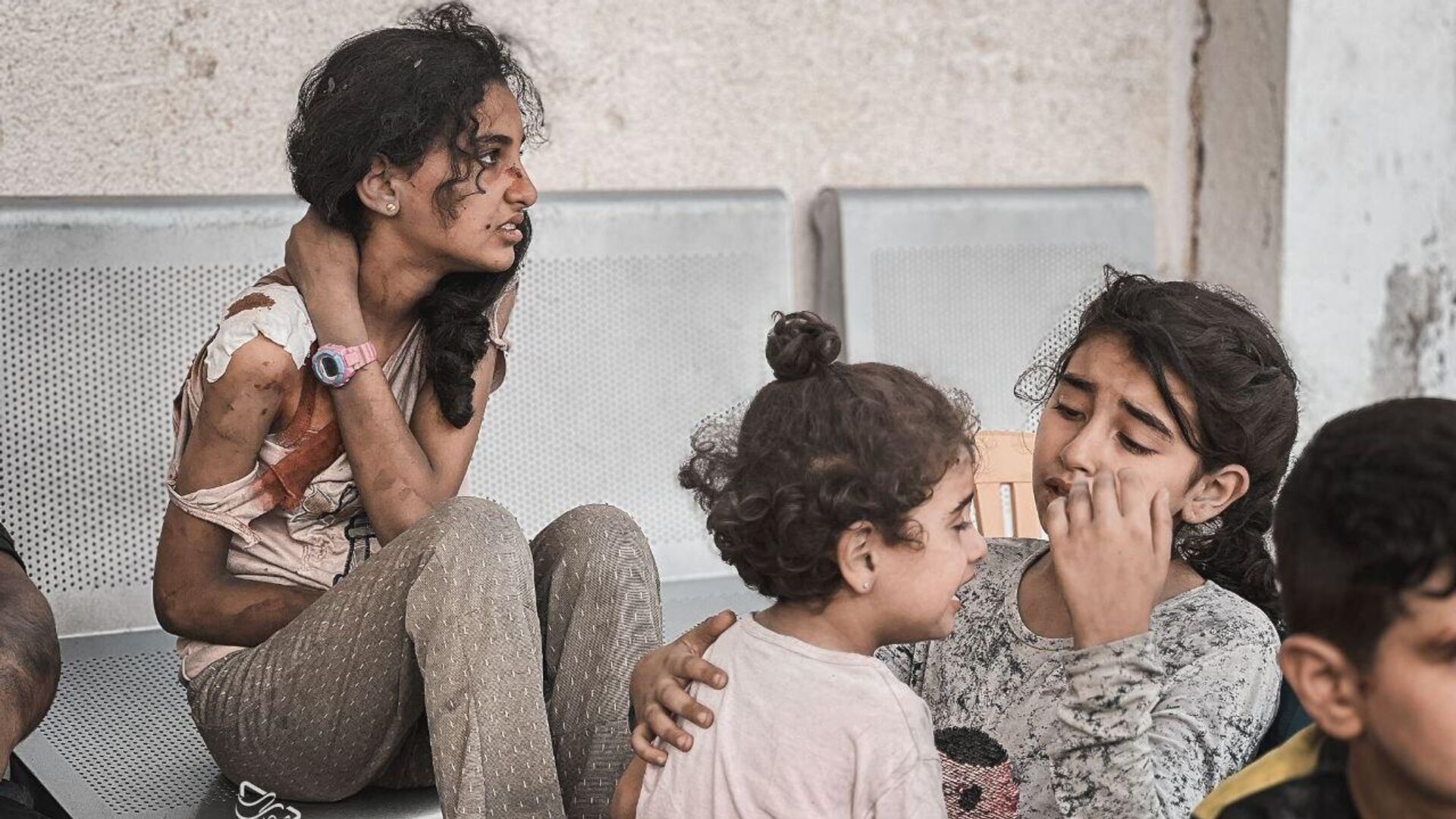
© Photo : Shehab Younis
Subscribe
A humanitarian crisis is rapidly unfolding in the Gaza Strip, as local residents are deprived of water, food, medicine, and electricity. At the same time, dozens of Israeli Air Force planes are turning the enclave into ruins. All this was the IDF's response to Hamas’ deadly attack on Israel last Saturday.
Earlier, Palestinian Prime Minister Mohammed Shtayyeh said the Gaza Strip needs safe corridors for the delivery of food and medicine.
Gaza Strip residents told Sputnik that a delay in international help may turn the strip into a mass grave.
'What We Are Experiencing Now Cannot Be Described'
Adel Zharna is a journalist from the Gaza Strip. He highlighted that there is no shelter or refuge in Gaza at all:
“At these moments, the occupation completely cuts off electricity and cuts off the Internet and water. What we are experiencing now cannot be described. A humanitarian, social and economic disaster. I am talking to you and I do not guarantee my life for a minute.”
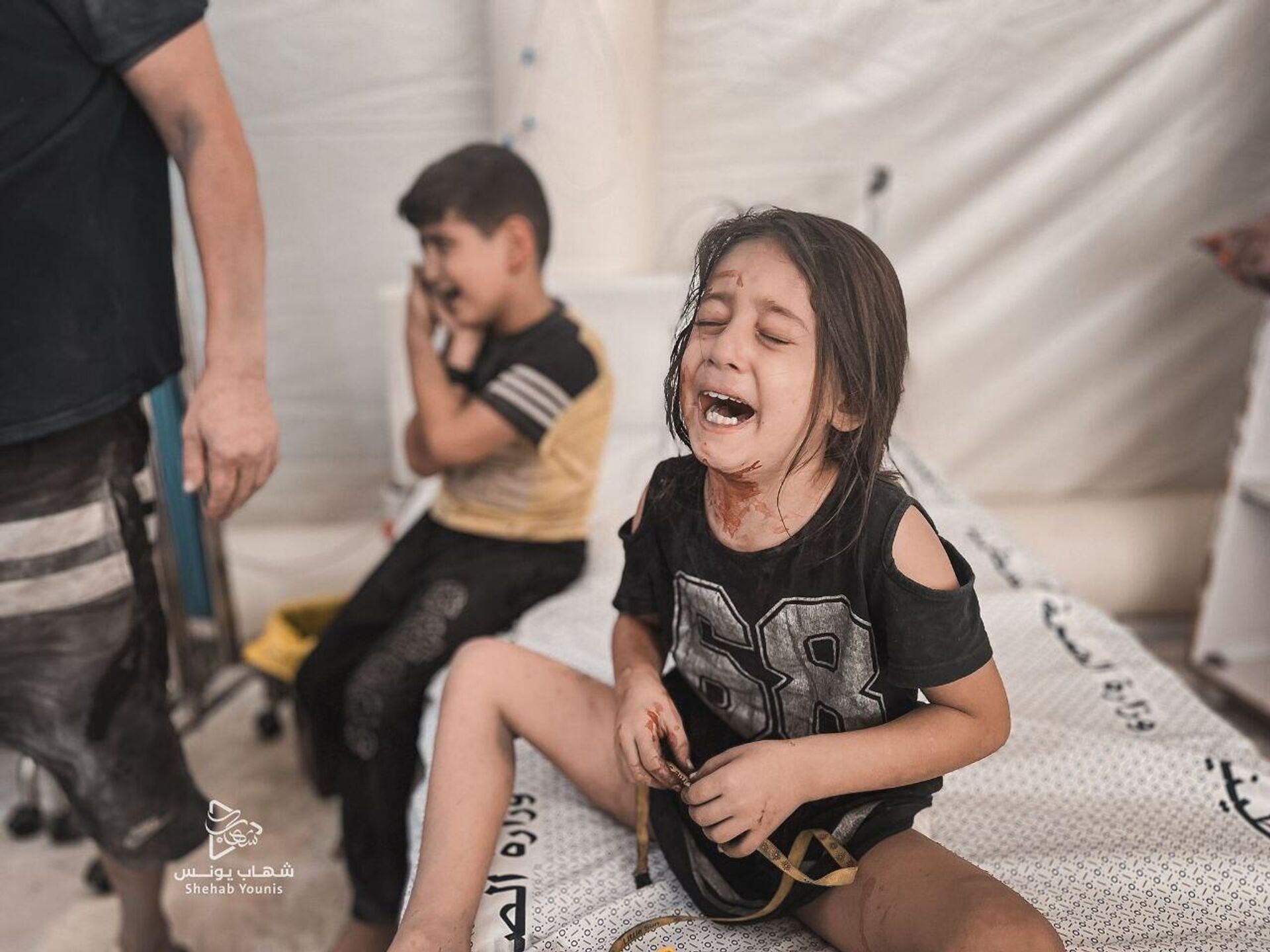
Children from Rafah city, Gaza Strip
© Photo : Shehab Younis
He also addressed the international community by saying “Save Gaza, we are dying.”
Total Blockade of Gaza
Shehab Younis, a photographer and filmmaker, is based in Rafah city, near the border between the Gaza Strip and Egypt. He described the humanitarian situation there as “increasingly acute”:
“Our living conditions have deteriorated significantly after the complete cutoff of electricity and water supplies. For the seventh day Israeli aircraft have been bombing our residential areas, killing entire families and forcing hundreds of thousands of people to flee to nowhere.”
The young Palestinian also noted that the Gaza Strip infrastructure could not cope with the ongoing disaster under the total blockade. Mortuaries and hospitals are full and overcrowded.
“IDF operations in Gaza leave behind large numbers of dead. Mortuaries can no longer accommodate them, there are too many corpses. The number of wounded is constantly growing. All beds are filled in our hospitals, the wounded are forced to crowd in the corridors, and the queues are huge. They are also placed in intensive care units and operating rooms. So, this threatens to collapse the healthcare system. But the fact is that hospitals can stop working at any time due to lack of electricity,” he explained.
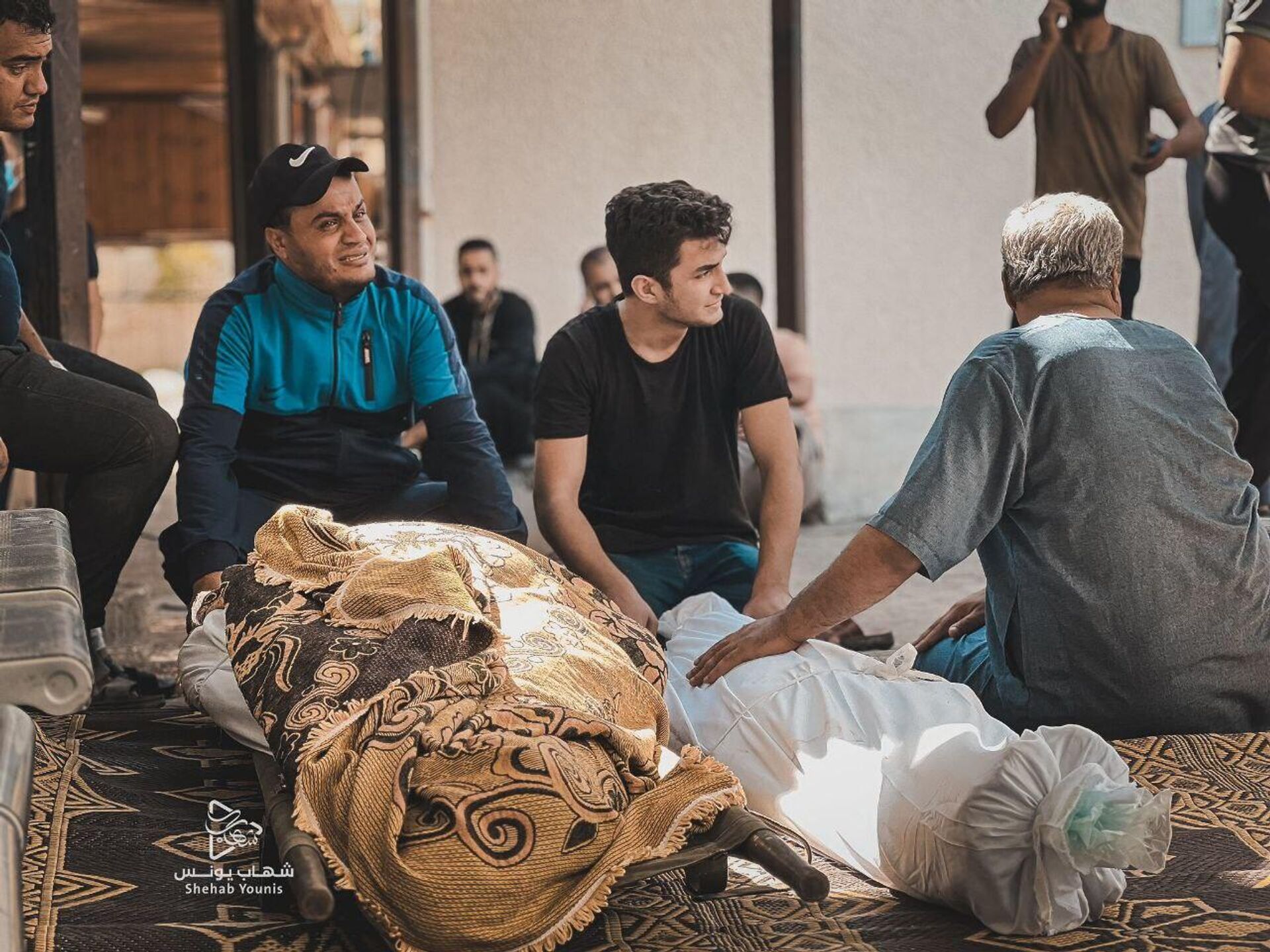
Before the funeral in Rafah city, Gaza Strip
© Photo : Shehab Younis
Moreover, Shehab mentioned that civilians in Gaza will face a slow and painful death without humanitarian aid and opened corridors. He pointed out:
“This is happening in front of the whole world, but no one has been able yet to find corridors for the humanitarian aid supplies to Gaza Strip. A delay in responding to the distress signal we, the people of Gaza, sent yesterday would result in the enclave turning into a mass grave, where people would die either due to bombing and destruction, hunger, lack of safe drinking water, or because of the spread of an epidemic and infectious diseases.”
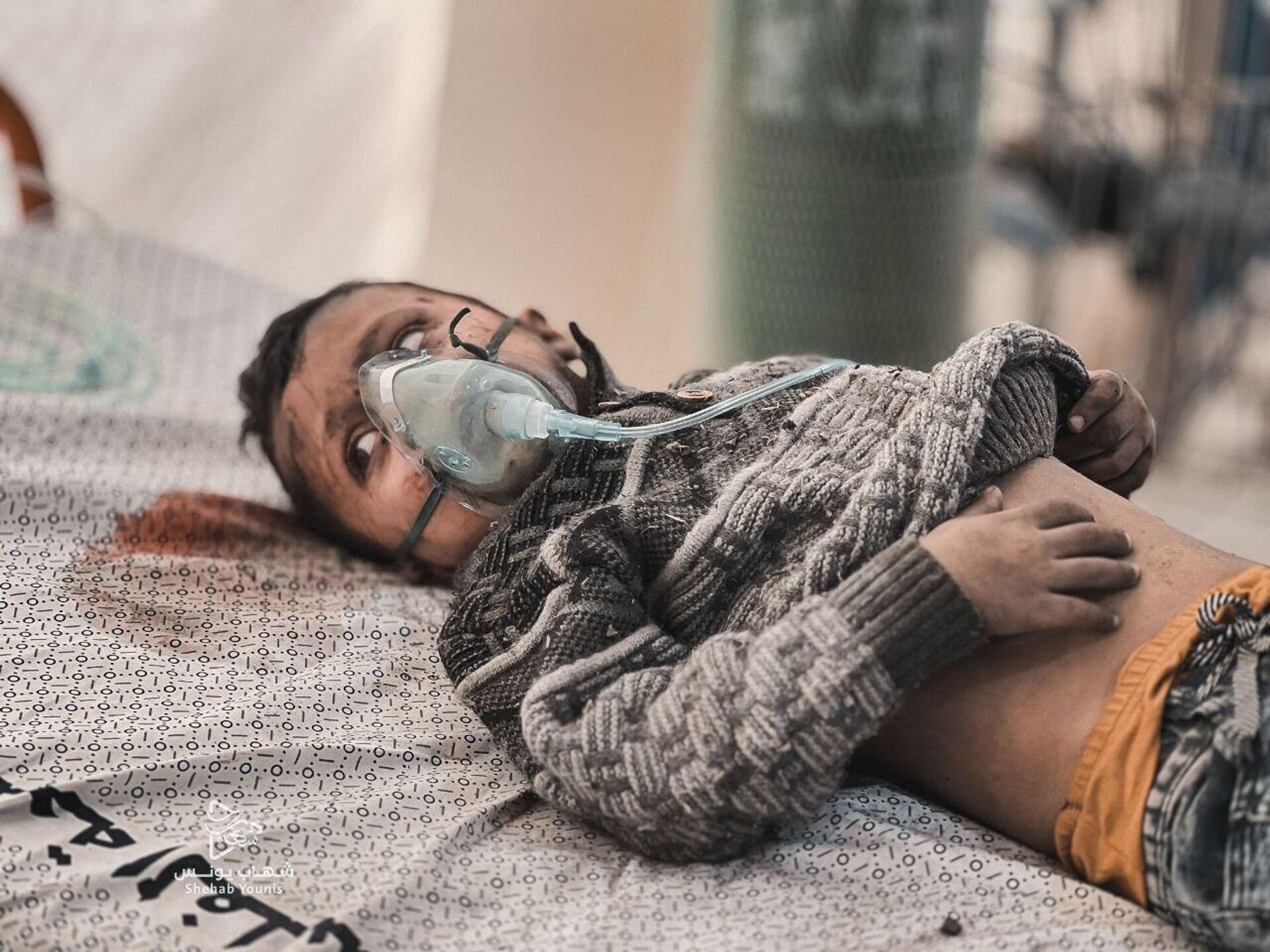
An injured boy from Gaza Strip
© Photo : Shehab Younis
Gaza Strip residents cannot even leave the enclave. There were only two checkpoints through which to exit – Kerem Shalom to Israel and Rafah to Egypt. The first one was completely destroyed during Hamas' attack on southern Israel last weekend. And the second one, Shehab said, is closed too.
“The Rafah checkpoint on the border with Egypt does not work, since it is being shelled by Israeli Army,” he summed up.
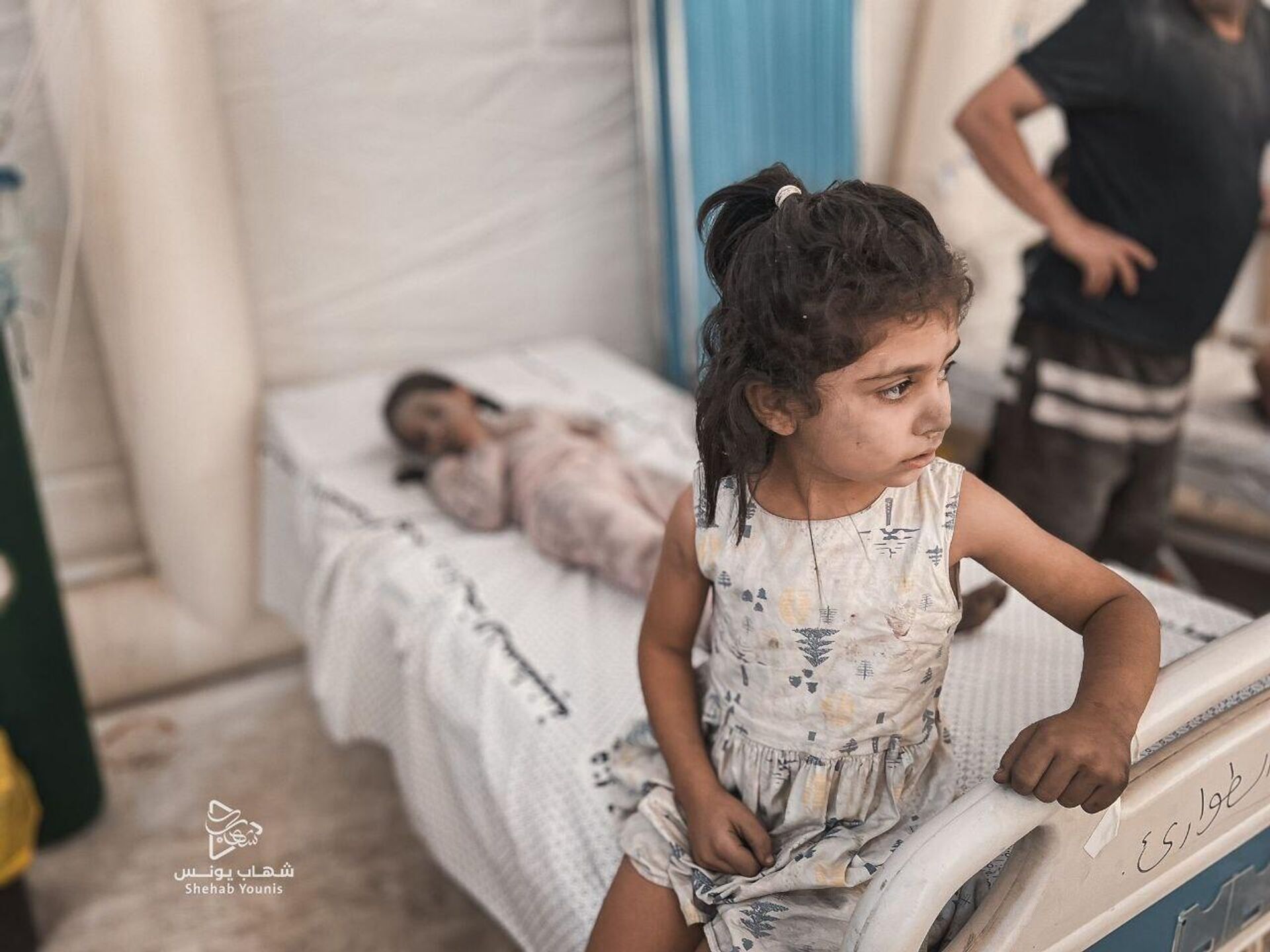
A girl from Rafah city, Gaza Strip
© Photo : Shehab Younis
The Gaza Strip, a coastal enclave controlled by Hamas, has been hit by airstrikes since Israeli Defense Minister Yoav Gallant ordered a “total siege” of the area, including cutting off electricity, food, water, and fuel supplies. According to UN data, more than 260,000 people have been forced to flee their homes in Gaza. More than 2,500 houses have been destroyed in Gaza, and about 23,000 have been left so damaged that living in them is impossible.


